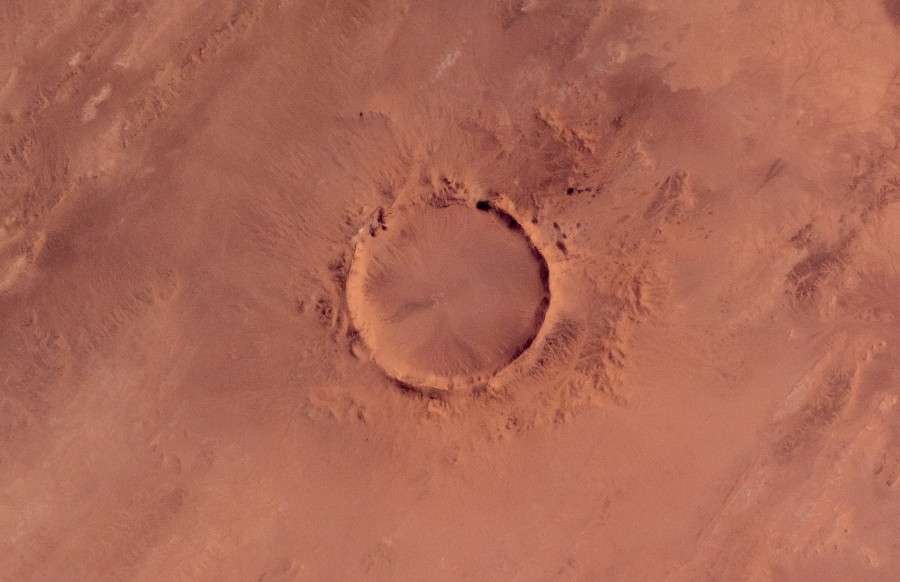A CaSSIS camera was installed aboard the Trace Gas Orbiter vehicle of the Russian-European ExoMars 2016 mission. And on October 19, 2020, a picture was taken. Thanks to colored filters, it was possible to record different-colored minerals that reflect light differently at different wavelengths. The light-colored deposits indicate outcrops of bedrock, which may contain ancient clay minerals. They are formed by water. The photo shows sandy deposits that create “ripples” at the bottom of the crater. And the reddish-brown color indicates the presence of iron oxides in their composition.
Recall that the project ExoMars is implemented jointly by Roscosmos State Corporation and the European Space Agency in two stages. The first mission consisted of two spacecraft and was launched into space in 2016. Trace Gas Orbiter was used to observe the atmosphere and surface of the planet. So far, it has been in a working orbit near Mars since spring 2018. And the Schiaparelli landing module was used to practice landing techniques. Its mission ended abnormally.

Mission Trace Gas Orbiter assumes the solution of scientific tasks: registration of small components of Martian atmosphere, including methane, mapping of water distribution in the upper layer of the soil with a high spatial resolution of about tens of kilometers, stereo imaging of the surface. Russian-made equipment was installed on the spacecraft for this purpose: a spectrometric complex ACS (Atmospheric Chemistry Suit) and FREND (Fine-Resolution Epithermal Neutron Detector).
The second phase of the project will be launched in 2022. It envisages the delivery of the Russian Kazachok landing platform with the European Rosalind Franklin automatic Mars rover on board to the surface of Mars. The launch will take place using a Proton-M launch vehicle and a Briz-M upper stage from the Baikonur Cosmodrome.




